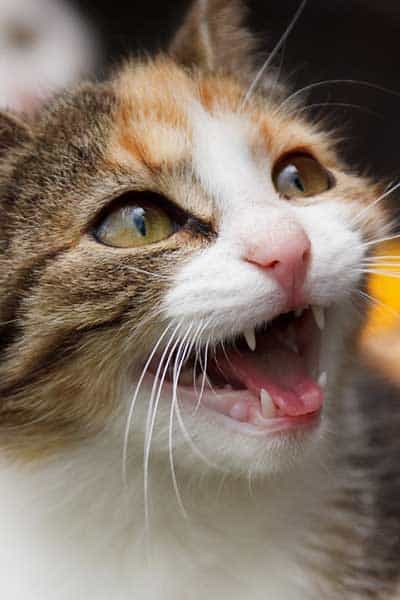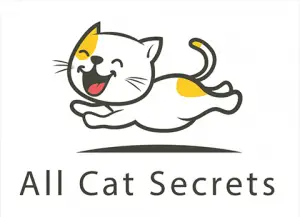Cats are some of the cutest and most adorable pets ever to have been domesticated by humans. Thanks to their affectionate and playful nature, cats can make an otherwise dull day lively and colorful.
In an ideal world, cats rank way down in the family pecking order. So, according to the unwritten rules, your feline friend should obey you unconditionally.
That means staying calm and not putting up a fuss whenever you’re about to leave the house each morning. It also means keeping his cool during meal preparations and not complaining even if his food is a little unsavory.
Most importantly, the fact that cats rank lower than humans in the family pecking order means that your cat should not create a scene whenever you want to put him into a carrier.
Unfortunately, things don’t always work out that way. In fact, when it comes to getting cats into their carriers, always expect fierce resistance even if your cat is usually the calm and mellow kind.
Why Is Getting A Cat into His Carrier Such A Big Deal?
As a cat owner, it can be frustrating when you have an appointment with the vet but your feline friend just won’t get into his carrier.
Not only will his resistance cause you to miss your appointment with the vet. The resultant aggression can also cause you massive delays when you’re trying to go on a short walk or trip with the cat.
And depending on how aggressive your cat gets when you try to get him into his carrier, the entire ordeal may leave you nursing some deep wounds on your forearm (or face). Trust me, neither of these is an ideal experience.

If you’ve ever found yourself in these distressing situations, know that you’re not alone. A 2013 Bayer Veterinary Care Usage study suggests that up to 38% of cat owners develop stress at the thought of getting their cats into their carriers.
But should we blame our cats for creating drama whenever we try to get them into their carriers?
Absolutely not. As the cat owner, the onus is on you to find out why your cat behaves the way it does. Thereafter, you can apply the right techniques to get him to enter his carrier. More insights on that later on, but first things first.
Why Would You Want To Get Your Cat Into His Carrier?
Many cat owners probably only use a cat carrier to haul their pets to the vet. However, the carrier comes with plenty of other uses.
The following are other situations that may necessitate the use of your cat’s carrier.
1. When Traveling Together
Those regular trips to the vet aren’t the only trips you’ll go on with your feline friend. You may also choose to go on walks around the neighborhood with your cat, or even go on vacation together.
In either case, a cat carrier helps to keep the animal safe, especially when you want to keep him by your side the whole time.

2. When Feeding
Carriers can serve as excellent feeding spaces, especially if you have more than one cat in the house.
As you may already know, cats are fiercely territorial and jealously possessive of their foods. If you have cats that don’t seem to get along, you may be forced to keep their feeding bowls in different rooms to reduce confrontations.
Fortunately, a cat carrier allows you to feed your feline friend in any room, without the cat losing his food to other dominant pets in the house.
Most importantly, the carrier can help where your cat is on specific diets or medication. By placing his food, health supplements, or meds in the carrier, you’ll be preventing other pets from coming into contact with the food or medicine.
3. Creating a Safe Haven
A cat carrier also offers security to cats, both at home and in transit.
The carrier is to a cat what a kennel is to a dog. Once the cat is convinced that he is safe from people and other dominant pets around, he will not mind having a nap or frolicking inside the carrier.
As a safe haven for cats, a carrier is especially useful when you’re in a rather chaotic environment, where lots of people and things are moving around. Not only does it offer the cat a sense of safety, but it also prevents accidental injury to the cat.
4. When Making Introductions
Those who have introduced cats to other pets or people know how tense the situation can get on the first few days of making acquaintance. If the resident cat is small or skittish, he may feel intimidated and escape.
And if the cat is big or too territorial, he may not hesitate to confront the newcomer. A cat carrier helps to avert any fights and make the introduction process go on smoothly.
5. When Trying To Avoid Distractions
You’re having a virtual staff meeting and all of a sudden, your cat jumps onto your laptop’s keyboard and decides to take a selfie. Or, you’re trying to perform an exercise but your kitto just won’t let you concentrate.
Locking the cat in a separate room may work, but it could also make the cat more afraid and withdraw from you. Your best solution is to get him into his carrier and keep him there so he can follow the action from a safer spot.
ALSO READ: Why Does My Cat Attack Me And No One Else? (6 Reasons)
Why Would Your Cat Become Aggressive When Trying To Get Him Into His Carrier?
Generally, cats suffer from various forms of aggression, including;
- Fear aggression,
- Territorial aggression,
- Play aggression,
- Maternal aggression,
- Inter-cat aggression,
- Pain-induced aggression,
- Petting-induced aggression, and
- Redirected aggression

Now, each of these forms of aggression may make your cat reluctant to get into his carrier.
For instance, a cat in pain may fear that by hauling him into his carrier, you may touch him on the tender places. Similarly, a highly-territorial cat may become aggressive at the thought of getting into his carrier, as that would mean he loses his patch to other cats.
However, much of a cat’s aggression when trying to get him into his carrier is a result of fear. The fear could be triggered by various external stimuli, including a specific person or animal, noise, lights, and the fear of public places. It’s also worth noting that cats are claustrophobic, which means that they’re generally frightened by constricted spaces.
How to Get an Aggressive Cat into a Carrier
1. Understand Your Cat’s Nature and Body Language
Even before you think of getting your cat into his carrier, you should begin easy by understanding the cat’s nature, particularly how aggressive he is. Right off the bat, let’s point out that all cats are fairly aggressive. It’s the degree of aggression that differs.
If your cat is naturally aggressive, you can expect him to be highly resistant to the idea of a carrier. If the aggression is due to other causes, such as external stimuli or disease, then the best thing to do is address the cause first.
The following are some of the symptoms of an aggressive cat that you should look out for;
- Piloerection (raised hairs, including those on the cat’s tail and fur),
- Dilated pupils,
- Tail held erect,
- Ears flattened backward,
- Direct stare,
- Directly facing and advancing towards you,
- Growling, hissing, howling, or yowling, and
- Scratching, swatting, or pawing in the air.
If you notice any of these symptoms, the conventional wisdom is to not try to get the cat into his carrier. Instead, allow him some time to calm down.

2. Get Your Cat the Right Carrier
After understanding how aggressive your cat is, the next tip when attempting to get the cat into his carrier is to find the animal a decent carrier.
The cat carrier market teems with thousands of products, each of which is marketed as ‘the real deal.’ However, when shopping for a perfect carrier for your cat, do not be swayed by the marketing clichés out there. Instead, you should make a list of the top features to look out for and conduct your shopping based on that list.
The most important feature to look out for in a cat carrier is comfort, both for the cat and for you. The carrier should be sizable enough so that the cat doesn’t feel confined in it. It should also be airy enough to prevent the cat from feeling suffocated, as well as have a number of holes that your feline friend can peek through.
Once you’ve purchased the carrier, ensure that you clean it as regularly as required. You might also consider throwing in scented products that your cat is generally attracted to.
Other best practices when shopping for a cat’s carrier is to go for a carrier that has hard sides, as well as one that comes apart in the middle or opens from both the front and top. That way, you can remove a cat from it without necessarily dragging him out from the front, which is excellent for skittish cats.
Also, insist on carriers that are seat-belted to keep your furry friend safe and calm during bumpy road drives.
Last update on 2024-07-14 / Affiliate links / Images from Amazon Product Advertising API
3. Familiarize Your Cat with the Carrier
As we already indicated, cats are generally claustrophobic. So, even if you’re blessed to have an unaggressive cat, you can still expect some resistance when trying to get him into the carrier. The best way to go about allaying these fears is to familiarize the cat with the carrier first.
Familiarizing your cat with his carrier is akin to introducing the animal to another pet or person. You want to go slow and not make the cat more nervous than he already is.
One of the best ways to familiarize your cat with his carrier is to schedule veterinary appointments well ahead of time. That will give you ample time to get the animal acquainted with his carrier.
Avoid impromptu visits to the vet unless in emergency cases. Sudden vet visits limit the amount of time you have to convince the cat to get into his carrier, which might trigger aggression. Imagine how nervous it would be if you were invited to an interview on short notice, even before you’ve had time to try on your new shoes!

Another way to familiarize your cat with his carrier is to place the carrier on a place that the cat frequents a lot, so that he can check it out on his own. Cats are insanely curious animals, and this is an excellent opportunity to harness that curiosity for the common good.
By placing a carrier in the cat’s playing patch, feeding spot, or sleeping area and leaving it open, the animal will naturally take an interest in it. So, by the time you need to get him inside the bag, he won’t feel so nervous.
4. Raise Your Cat’s Interest in His Carrier
Cats are instinctively curious and won’t mind checking out any new item in their patch. But placing a carrier in places where your cat frequents a lot doesn’t necessarily guarantee that the animal will grow fond of the carrier. In fact, he might become disenchanted with the bag if there isn’t anything in it that piques his interest.
Thankfully, there are more tips you can employ to get your cat even more interested in the carrier. One such tip is leaving food inside the carrier so that the cat can walk straight into the bag to retrieve it.
It’s always advisable to experiment with cats’ favorite foods, such as beef and seafood. If the cat still won’t get inside the carrier even after spotting its favorite food inside of it, try starving the cat for a few hours or days.
This may sound gross. But sometimes, you’ve got to be cruel to be kind. And don’t worry about your cat starving to death, as cats are self-sufficient and fairly resilient. Only ensure that you give him water so that he doesn’t become dehydrated.
For the period you don’t offer him food, the cat may do just fine hunting for rodents. However, he will soon have to choose whether it’s really worth the trouble chasing after rats if he can simply walk into his carrier and retrieve his food.
Last update on 2024-07-14 / Affiliate links / Images from Amazon Product Advertising API
In addition to food, the following are other incentives that you can place inside a cat’s carrier to try and lure the animal to it;
- Toys, particularly cat puzzles so that he spends more time inside the carrier. You can also use laser pointers to lure the cat into the carrier,
- Bedding, particularly pillows or the cat’s own beddings,
- Cat-friendly herbs like catnip or valerian,
- Pheromones-containing products such as Feliway spray,
Whatever incentive you choose, remember that the goal is to draw the cat close to the carrier, not necessarily get him inside of it. But if he does go inside the carrier to fetch the treat, that’s a major score for you.
Leverage the opportunity to make the cat even more familiar with the carrier. To do that, you can close the door of the carrier for a few minutes, then open it and offer the cat some more treat. If the cat succeeds in getting into the carrier and feels at home in it, try closing the door and carrying around the carrier, with your cat inside it.

5. Put the Cat inside the Carrier Carefully
At this point, your cat should already be familiar with his carrier in the sense that he can get inside the bag by himself. Or at least, he doesn’t mind you picking him up and putting him in there. If you must pick your cat and place him inside his carrier, do so carefully.
First up, you want to make sure that the carrier is upright. This will make it easier for the cat to get inside and out of the carrier, or in this case, you’ll have an easier time putting him in there.
Another tip is to put the cat inside the carrier tail first. That way, the cat will not realize that he is being placed in a confined space, which especially helps with frightened cats.
Also, always clean the carrier each time you get home from the vet. Cats, just like babies, detest the smell of medicine and hospital. So, if you leave the smells from the vet to linger on in the carrier, it may trigger stress the next time you want to get your cat inside it.
It’s also advisable to talk to your cat when he is inside the carrier. That will go a long way in calming down the animal. Another excellent tip in calming down the cat is to cover him using a towel or blanket, or spread the towel on top of the carrier. The towel or blanket should preferable by one with the scents of home or one that contains pheromones.
ALSO READ: Why Does My Cat Pee in the Sink? What Can I Do About It?
What If You Must Force The Cat Into His Carrier?
It’s worth noting that even after exercising patience and diligence in trying to get your cat to his carrier naturally, the animal might still prove a bit too difficult.
In such cases, you may need to force him into his carrier. By ‘forcing’ the cat into his carrier, we don’t imply yelling at the poor animal or hitting it. Instead, consider any of the following methods;
✔ Wrap the animal using a towel or blanket and place them inside the carrier. In this case, the towel or blanket offers a buffer in case the cat attempts to claw or bite you. The towel/blanket method is also ideal if the cat is sick or injured.
✔ Grab the cat using a pillow case and place them inside the carrier.
✔ Lure the cat into a small room with less furniture or places to escape to, then grab him and place him into the carrier.

Conclusion
There goes our comprehensive guide on how to get a cat into his carrier. Remember that as with any training, patience is a virtue. Expect resistance at first. But over time, your cat will eventually grow fond of his carrier.
But what if the cat is still uncomfortable with the carrier despite your best efforts?
Don’t lose your cool or throw in the towel. Instead, apply the creative yet gentle methods of getting him into his carrier that we’ve highlighted above. If it comes down to it, enlist the help of a professional.









